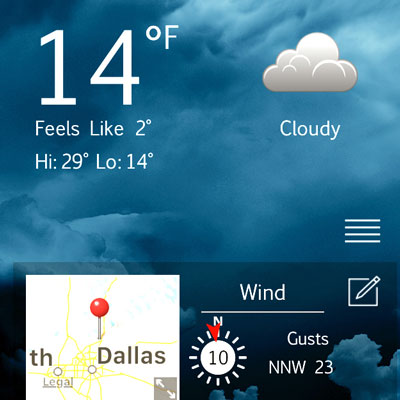Question of the Week: December 22, 2016
“Neil, it looks like the cold did a number on a lot of my plants. What can I do to help them recover?”

Photo: Wherever you are in Texas, odds are that you saw the coldest weather or the past couple of years Sunday and Monday mornings this week – well below zero in the north end of the Panhandle.
Many of you know that I do a couple of gardening talk shows each week. (Podcasts on my website.) One of the biggest challenges for me comes when extremely cold weather comes early in the winter, because people start wringing their hands, worrying what will become of their prized plants.
What I can tell you is that the damage, if there was any, has already been done. About all you can do at this point is to keep the plants watered properly the balance of the winter. You’ll be surprised at how most will bounce back. Those that don’t probably were mistakes in the first place.
Let the plants’ stems be your guide. If leaves turn brown, they may be all that was killed, but if stems turn brittle or mushy, then that part of the plant has been frozen. I remember looking at pittosporums I planted in Farmers Branch when we first moved to North Texas back in the 70s. I’d grown up with them all around me in College Station, so I landscaped the front of our house with them in the Metroplex. A very cold winter two or three years down the road froze them completely. Within two days their bark was loose and peeling and it was obvious that the plants wouldn’t be coming back.
Waxleaf ligustrums, by comparison, may look like they’ve been walked on with red-hot golf shoes, pock-marked and ugly. That damage is usually confined just to their leaves and the plants almost always come bouncing back in the spring. That depends, of course, on where you live, how cold it got and how long it stayed cold.
Other plants that may show browning of leaves include live oaks, Asian jasmine, fig ivy, aspidistra and holly ferns. There are dozens of others, again, depending on where you are and all those other variables. The plants I mentioned are just the ones in my own yard in rural Collin County north of DFW. 14 degrees is cold enough to cause their leaves to turn brown, but at least in my area, I’ve learned not to worry about the plants’ actual survival.
I’m more concerned in the DFW area about loquats, pittosporums, oleanders, gardenias, fatsias and, of all things, sago palms. Those are plants that probably should have been left for folks farther south.
If you live in South Texas, the focus shifts to other plants. Esperanzas may have frozen to the ground. Bottlebrush might have been tested. Bougainvilleas could be lost entirely. Olives may be in jeopardy.
To sum it all up, your best goals over the next couple of weeks will be to tidy things up as best you can. Water deeply during dry spells. And sit tight to see how things play out come early spring.
